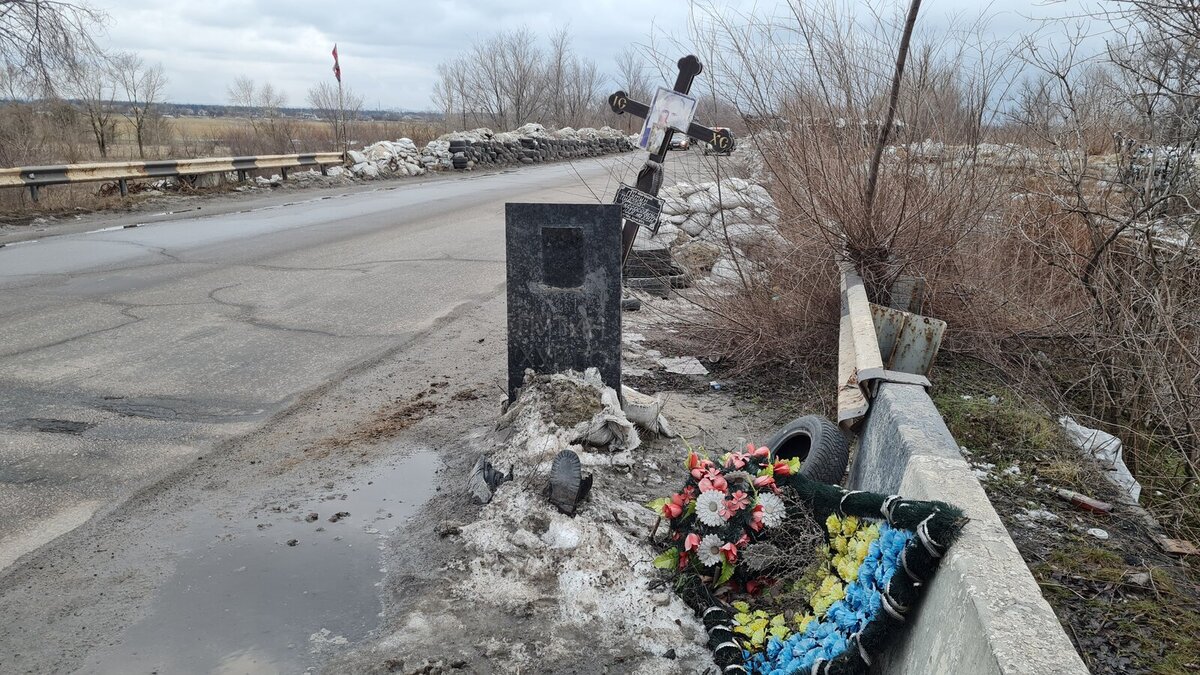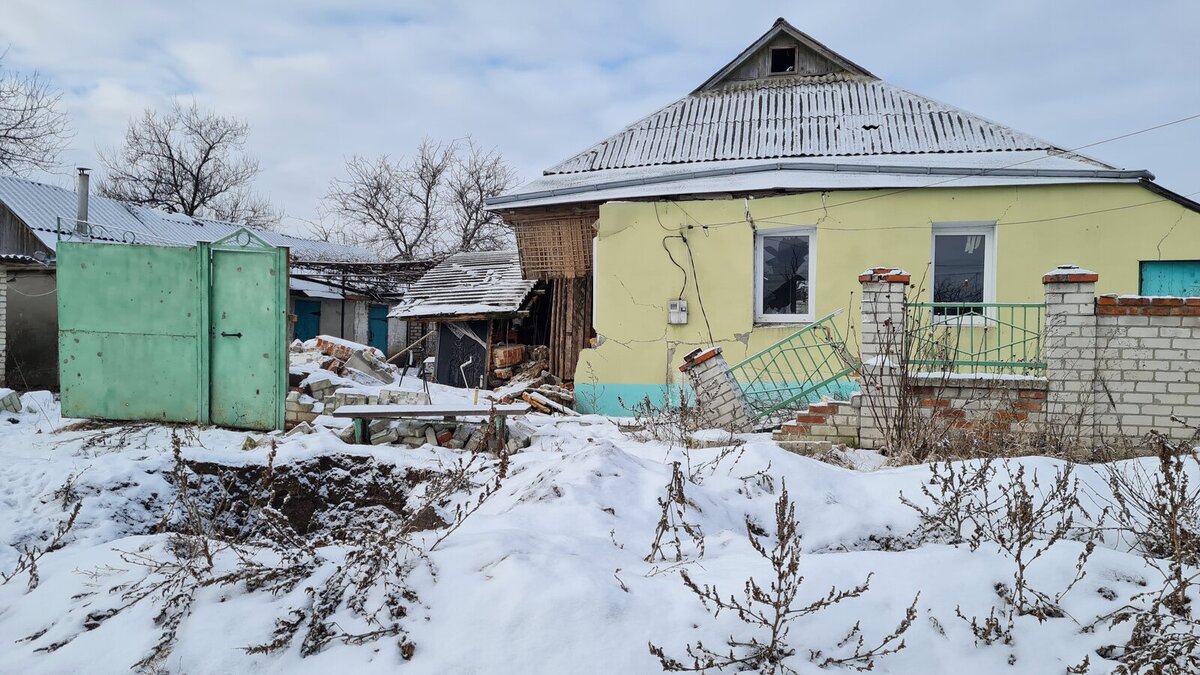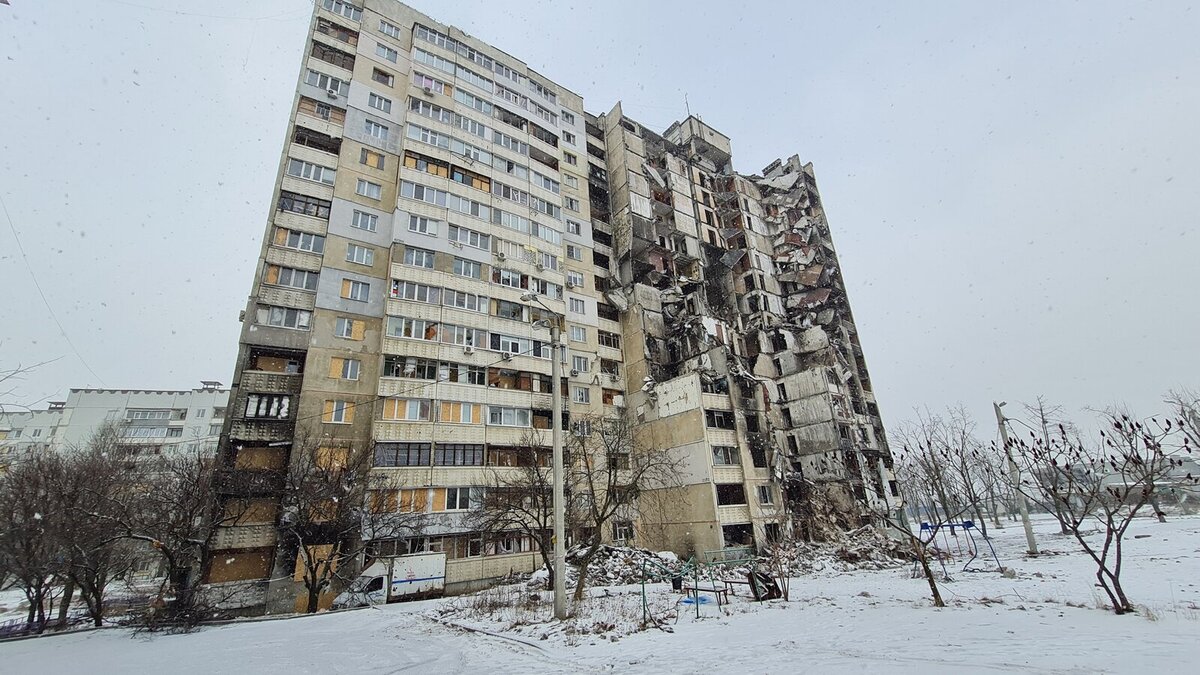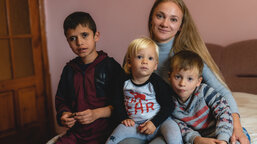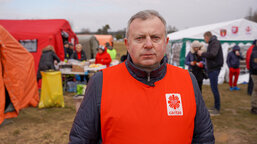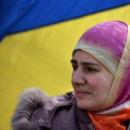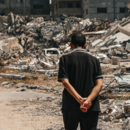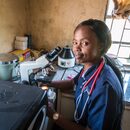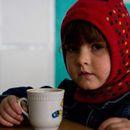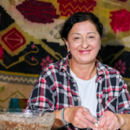Jakub Líčka, Secretary General of Caritas Czech Republic, has recently returned from an extensive trip to Ukraine. In addition to the western parts of the country, he also visited Kharkiv, Zaporozhye and the town of Bucha, and got up close to the front line. We talked to Jakub Líčka about his impressions of the country and how Ukraine has changed in the year of war.
You have recently returned from an extensive trip to Ukraine. What impressions did you leave Ukraine with?
That is a difficult question. We travelled across Ukraine to various places, including areas close to the front line, and my impressions of different areas vary, of course. The main purpose of our trip was to personally support our Caritas partners there and to stress that we are with them and not forgetting them. At the same time, we wanted to see how the hundreds of generators and gas stoves we sent to Ukraine as part of the Light and Heat for Ukraine collection initiated by the Archdiocesan Caritas Olomouc had been used effectively.
I was very pleased to see that the delivery of both the generators and gas stoves made a real difference and that they are effectively serving those in need across the country. I also took away a positive impression from meeting our partners, Caritas workers and ordinary people who have been helped by the Caritas. It gave me renewed reassurance that our assistance is indeed vital and must be continued.
What is the situation in Ukraine like at the moment? We have been following the war in the country almost live for more than a year now, yet it is probably not easy for many people to imagine what it looks like in Ukraine in concrete terms, what everyday life looks like ....
From what we see in the media, it might seem that as soon as one crosses the borders into Ukraine, one finds oneself on the front line. But this is fortunately not the case. For example, on the road from Lviv to Kiev, where we were travelling, one can almost get the impression that one is in a peaceful country. The road is OK, there are a number of ordinary gas stations along the way, where you can fill up or buy snacks .... But this picture is a complete illusion. The war has cruelly affected every single person in the whole country. It sounds cynical, but even in war, people eventually have to learn to live somehow, and Ukrainians are doing their best to live as normal a life as possible.
Ukraine is a huge country. Although the war is affecting the whole country, it is undoubtedly affecting the people of eastern and southern Ukraine with much greater force. Is there any way of comparing the situation in different parts of the country?
The picture of the war in Ukraine is very broad. One of the images is visual, something that evokes immediate emotions in people, or rather a cocktail of often contradictory emotions. In Zaporozhye, for example, we were standing in front of a bombed-out apartment building that was missing its front wall, so that individual kitchens, living rooms, bedrooms were looking out... Right in front of this house, there was also a small memorial with stuffed toys, which commemorates the 13 children who died there as a result of the Russian missile attack there. And yet, right next door, there is that familiar housing estate playground where children are playing as if there was no war and the tragedy that had taken place just a few metres away never happened. When you think about it, it is absolutely crazy. This is one of the many raw images of the war. In Kharkiv, we again visited a housing estate, the size and shape of Prague's Chodov. Many of the apartment blocks are bombed out and you feel like you are in a ghost town. The only sign of life is the sound of construction machines working to repair some of the many destroyed houses, nurseries ...
But war has other than raw images of destruction and desolation.
Absolutely. When you drive across Ukraine, for example, you pass through countless towns and villages, and even from the car you can see a number of cemeteries. In perhaps every village we drove through, we saw many fresh graves with Ukrainian flags in the cemeteries. It is such a silent proof that the war is not only affecting areas in the east and south of the country, but that it has directly affected the whole of Ukraine. It is estimated that around a hundred thousand Ukrainian soldiers have died in the war over the past year, across the country. In perception, however, it is still just a number that may not be easy to imagine. But when you drive through Ukraine and you see those fresh flags everywhere and you know that they were all mostly young men, a strange weight and sadness comes over you.
Your journey took you across Ukraine. What were all the places you visited?
We went mainly to the east and south of Ukraine, and more or less just drove through the western part. But we also visited Kiev and the surrounding area, including the town of Bucha. In the south and east, apart from Kharkiv and Dnipro, we also headed to Zaporozhye. There we met with our partner Caritas, both the Zaporozhye Caritas itself and Caritas Mariupol that evacuated to the city during the first weeks of the war.
But we got even further closer to the frontline in the village of Novohrodivka, which lies beyond Pokrovsk towards Donetsk. From there it is about 20 kilometres to the front line and the effects of the war are naturally felt much more intensely there. Just like in Kharkiv, for example, where we also went and where the war is visible at every step. What one sees and experiences is one thing, but behind everything, there are tens, hundreds of thousands of individual stories that affect one very deeply.
Can you think of a particular story that affected you personally?
In Zaporozhye, we visited a former hotel that now serves as a hostel for those who had to flee Mariupol. I met there a 91-year-old woman who was almost immobile and sick, and her also already retired daughter, who both evacuated from Mariupol shortly after the invasion began. The situation was extremely difficult at the time, and they, like almost everyone else, were repeatedly unable to get out of the city through official humanitarian corridors because of shelling. Eventually, they managed to reach safety by their own means by car. But a journey that would normally take less than three hours took them three days. To go through this at such an advanced age, at an age when it is already difficult for you to understand exactly what is going on around you and why, at an age when you just want to enjoy the remaining time you are given in peace. .... Meeting this woman and learning her story really struck me personally. And there are unfortunately thousands and thousands sad stories like this one. It is crazy.
One would think it was actually a positive story. Unlike so many others, they finally made it to safety...
For us, it is really very difficult or impossible to imagine what Ukrainians are going through. I met a lady near Kiev who had originally fled to the Czech Republic. Although she had a good time here and seemingly lacked nothing, she eventually returned to Ukraine as soon as she copuld. She said she would have never imagined how much she loved Ukraine until she was forced to leave. From our point of view, it may seem that once one is safe, whether in Ukraine or across the country's borders, one has won. But that is a huge illusion. The enormous stress that people experience, even when they are safe, is unimaginable. This lady's husband and son had stayed in Ukraine, her constantly waiting for her son to be drafted into the army, wondering what had happened to their home, how it would all turn out .... and of course the whole context of the war. Although she eventually returned home to her undamaged house, her husband and son alive and seemingly all fine, she will carry the stress she went through with her for the rest of her life.
The war has been going on for more than a year. Can you compare how the situation has changed during the year of war?
You can see the differences, for example, when you drive around Ukraine. A year ago, getting from Lviv to Kharkiv was a matter of a few days, and on the way one encountered many times more check-points than nowadays. At the same time, there were various militia groups at the entrances to villages and so on, and the control of people's movements was much more rigorous. Also, in the early days of the war, a lot of people who had only minimal experience with guns got them. There was extreme nervousness everywhere, it was not clear who was who; who was a spy, who was deployed by Russia, who was an ordinary citizen. This, of course, created dangerous situations. Today the situation is different only in that people have had to get used to life in war to a certain extent, things have acquired a certain order. Of course, the war itself is developing differently than in the first weeks and is taking place predominantly on the frontlines.
Although the end of the war is unfortunately not yet in sight, reconstruction is already underway in many places. The destroyed infrastructure. Is that something that you've also come across in your travels in Ukraine?
It undoubtedly depends on the specific area. The closer to the front and the more devastated an area or a village is, the less you can see any reconstruction efforts. This is undoubtedly due to the fact that in many places people have not yet returned because it is too difficult in that particular place, while at the same time there are areas where there is still quite a lot of fear that the war may return, such as in Kharkiv. So, yes, there are areas in the east where there are cautious reconstructions going on, but people are rather waiting. Whereas in Bucha, for example, where many houses were damaged, the ubiquitous reconstruction is in full swing and the village is slowly coming back to life. This is undoubtedly also due to the confidence that the war will not return to Kiev and that it is already worth investing in repairs in the area.
Caritas Czech Republic is also helping people affected by the war in Ukraine. What does this aid look like?
Our foreign aid department focuses primarily on supporting people who had to flee their homes before the war. In the west of Ukraine, we have been training psychologists and social workers in crisis intervention, providing the basic needs of displaced people, but we are also reconstructing collective accommodation and building modular houses. Our Archdiocesan and Diocesan Caritas are also providing assistance through partnerships with local Cartias in Ukraine. On the one hand, they are working on projects they were already working on before the war. At the same time, they are also helping internally displaced people with basic and longer-term needs. Local Caritas in Ukraine provide accommodation and material assistance, but they also support displaced people in finding employment or providing education for children. In many places, they provide medical and psychological care or run children's centres where educational and leisure activities are provided for children. There is no doubt that the people of Ukraine will need our help for many years to come. Thank you to all the donors who are helping us to help in the country.





